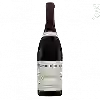
Winery OgierJenard Syrah
In the mouth this red wine is a powerful with a nice balance between acidity and tannins.
This wine generally goes well with beef, veal or pasta.
Taste structure of the Jenard Syrah from the Winery Ogier
Light | Bold | |
Smooth | Tannic | |
Dry | Sweet | |
Soft | Acidic |
In the mouth the Jenard Syrah of Winery Ogier in the region of Languedoc-Roussillon is a powerful with a nice balance between acidity and tannins.
Food and wine pairings with Jenard Syrah
Pairings that work perfectly with Jenard Syrah
Original food and wine pairings with Jenard Syrah
The Jenard Syrah of Winery Ogier matches generally quite well with dishes of beef, pasta or veal such as recipes of venison stew with red wine, pasta romantica or beef mironton.
Details and technical informations about Winery Ogier's Jenard Syrah.
Discover the grape variety: Thompson seedless
Most certainly finding its first origins in Persia, today Iran. It is registered in the Official Catalogue of table grape varieties list A1. Note that the variety gora chirine, also finding its first origins in Iran (Azerbaijan), is a mutation of the Sultanine, its berries of white or pink color being slightly larger.
Informations about the Winery Ogier
The Winery Ogier is one of wineries to follow in Languedoc-Roussillon.. It offers 153 wines for sale in the of Languedoc-Roussillon to come and discover on site or to buy online.
The wine region of Languedoc-Roussillon
Languedoc (formerly Coteaux du Languedoc) is a key appellation used in the Languedoc-Roussillon wine region of southern France. It covers Dry table wines of all three colors (red, white and rosé) from the entire region, but leaves Sweet and Sparkling wines to other more specialized appellations. About 75% of all Languedoc wines are red, with the remaining 25% split roughly down the middle between whites and rosés. The appellation covers most of the Languedoc region and almost a third of all the vineyards in France.
The word of the wine: Malolactic fermentation
Called second fermentation or malo for short. It is the degradation (under the effect of bacteria) of the malic acid naturally present in the wine into milder, less aggressive lactic acid. Some producers or wineries refuse this operation by "blocking the malo" (by cold and adding SO2) to keep a maximum of acidity which carries the aromas and accentuates the sensation of freshness.














